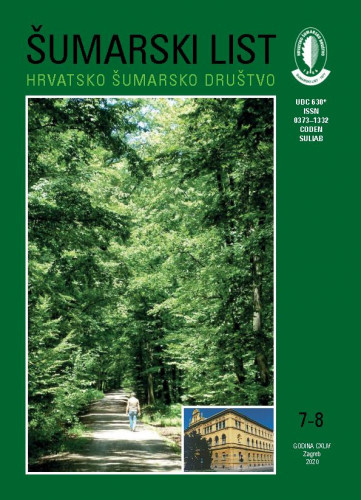Sustavnih istraživanja biološko-ekoloških obilježja cjelokupnog područja i same park-šume Hober nije bilo do sada. Strukturna obilježja sastojine nalazimo tek u Planu gospodarenja za park-šumu Hober (2006-2015). Šumarsku problematiku nalazimo u radu Vojinovića (1997). Dendrološka istraživanja imamo u radovima Denich i Draganović (1985), Vojinović (1997),Fabris (2001), Onofri (2002). Izostala je njegova cjelovita inventarizacija. Današnje stanje park-šume Hober karakterizira njegova zapuštenost i neuređenost kako šumske vegetacije i dendrološko-hortikulturnih, tako i vrtno-arhitektonskih sadržaja. Prisutna je koncepcijska nedefiniranost cjelokupnog područja Hobera. Park-šuma Hober u vegetacijskom smislu pripada šumskoj zajednici šuma alepskog bora i hrasta crnike (Querco ilicis – Pinetum halepensis Loisel 1971). Upravo iz razloga vegetacijske i strukturne neujednačenosti, postavljeno je 7 pokusnih ploha u samoj park-šumi, te još 4 izvan nje. Cilj je detaljnom vegetacijskom i strukturnom analizom izdvojiti pojedina područja, dati njihov opis i prikazati njihovo stanje, što se kasnije može upotrijebiti u svrhu zoniranja prostora. Analizirana istraživanja pokazuju da u sloju drveća alepski bor prevladava na plohama 1,2,3 i 9; crnika na plohama 4 i 5 te obični čempres na plohama 6 i 7. U sloju grmlja najzastupljenija je lemprika koja dolazi na svim plohama. Zatim su tu širokolisna zelenika i tršlja. Iz tablice 2 vidimo da je na svim plohama pokrovnost vegetacijom potpuna osim na plohi 6, gdje je rijetka makija. Sloj drveća je prevladavajući osim na plohama 8, 10 i 11, gdje je prisutna makija. Zamjetno je da je kod razvijenih sastojina podjednako gust sloj drveća i grmlja. Tu odstupaju plohe 6 i dijelom ploha 9 te plohe 10 gdje je makija te ploha 11 koja je prirodna sukcesija šumske vegetacije na zapuštenim poljoprivrednim površinama.; A systematic research of biological and ecological characteristics of the overall Hober area and Hober forest park itself has not been performed thus far. Structural characteristics of the stand were included only in The Management Plan for Hober Forest Park (2006-2015). Forestry issues were addressed in the paper by Vojinović (1997). Dendrological research was included in the papers by Denich and Draganović (1985), Vojinović (1997), Fabris (2001) and Onofri (2002). Its overall inventory records are missing. The current condition of Hober forest park is characterised by its neglect and no landscape design in terms of both forest vegetation, dendrological, horticultural and garden and architectural content. Moreover, there is conceptual indefiniteness of the overall Hober area. Hober forest park in terms of vegetation belongs to the forest community of the Aleppo pine and Holm oak (Querco ilicis – Pinetum halepensis Loisel 1971). It is primarily due to vegetative and structural unevenness that 7 experimental surfaces were placed in the forest park itself and 4 more outside of it. A comprehensive vegetation and structural analysis was intended for the selection of individual areas, in order to provide their description and present their condition, which can subsequently be used for the purpose of zoning the area. According to the analysed research the Aleppo pine prevails in the layer of trees on the surfaces 1, 2, 3 and 9; Holm oak on the surfaces 4 and 5 and Common cypress on the surfaces 6 and 7. Laurestine is the most common species in the shrub layer, which appears on all the surfaces. Then there are green olive trees with broad leaves and mastic trees. The tree layer prevails with the exception of the surfaces 8, 10 and 11 where there is maquis. It is evident that in developed stands the tree layer and the shrub layer are almost equally dense.
Sažetak

 Šumarski list : znanstveno-stručno i staleško glasilo Hrvatskoga šumarskog društva = journal of the Forestry Society of Croatia = Zeitschrift des Kroatischen Forstvereins = revue de la Societe forestiere Croate : 144, 7/8(2020) / glavni urednik Josip Margaletić.
Šumarski list : znanstveno-stručno i staleško glasilo Hrvatskoga šumarskog društva = journal of the Forestry Society of Croatia = Zeitschrift des Kroatischen Forstvereins = revue de la Societe forestiere Croate : 144, 7/8(2020) / glavni urednik Josip Margaletić.